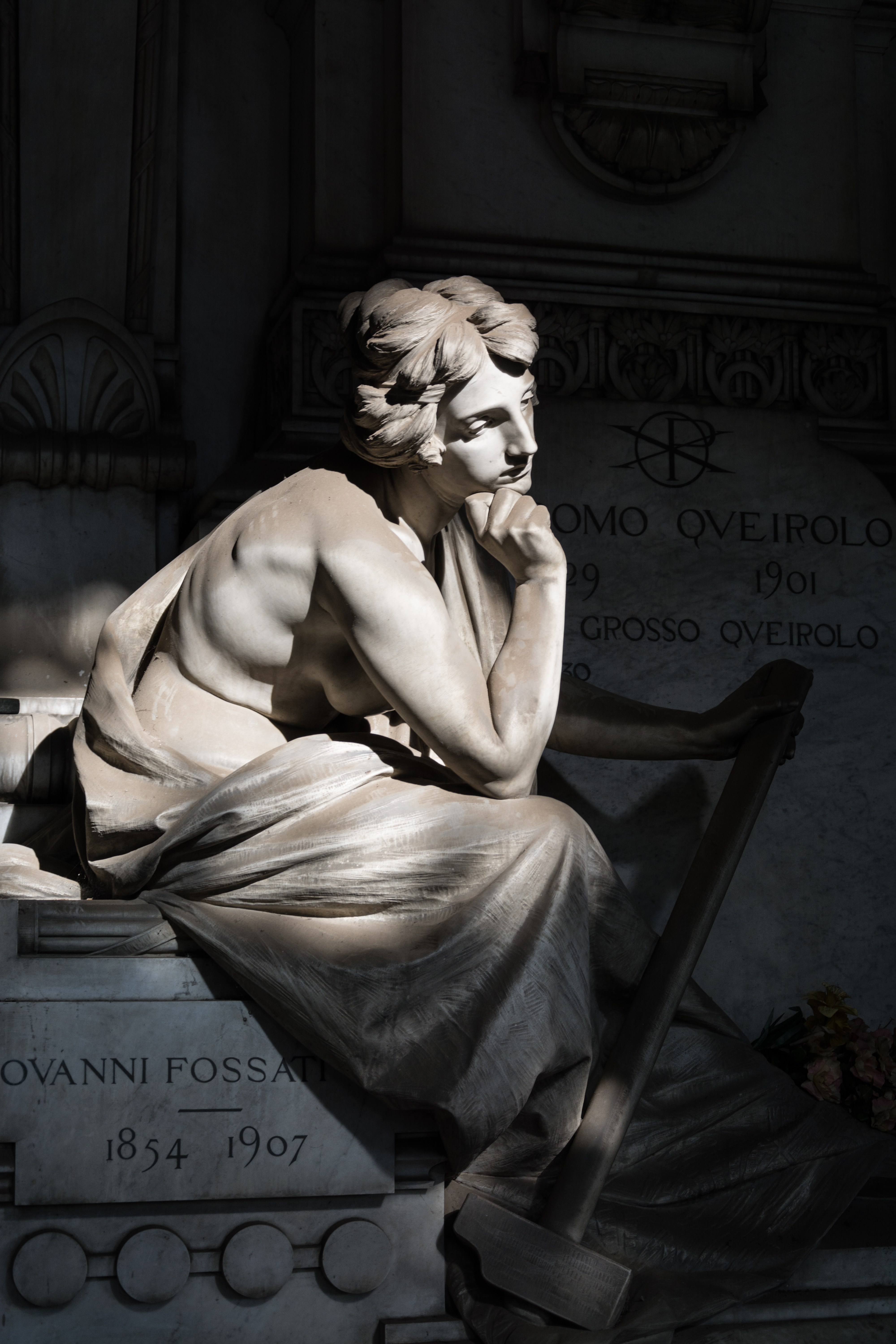Vittorio Lavezzari on:
[Wikipedia]
[Google]
[Amazon]


 Vittorio Lavezzari (1864–1938) was an Italian sculptor from the
Vittorio Lavezzari (1864–1938) was an Italian sculptor from the


 Vittorio Lavezzari (1864–1938) was an Italian sculptor from the
Vittorio Lavezzari (1864–1938) was an Italian sculptor from the Art Nouveau
Art Nouveau (; ) is an international style of art, architecture, and applied art, especially the decorative arts. The style is known by different names in different languages: in German, in Italian, in Catalan, and also known as the Modern ...
period, specializing in funerary sculpture
Funerary art is any work of art forming, or placed in, a repository for the remains of the dead. The term encompasses a wide variety of forms, including cenotaphs ("empty tombs"), tomb-like monuments which do not contain human remains, and comm ...
. His sculptures can mostly be seen in Genoa
Genoa ( ; it, Genova ; lij, Zêna ). is the capital of the Italian region of Liguria and the List of cities in Italy, sixth-largest city in Italy. In 2015, 594,733 people lived within the city's administrative limits. As of the 2011 Italian ce ...
in the Monumental Cemetery of Staglieno
The Cimitero monumentale di Staglieno is an extensive monumental cemetery located on a hillside in the district of Staglieno of Genoa, Italy, famous for its monumental sculpture. Covering an area of more than a square kilometre, it is one of the ...
.
Biography
Born in Genoa, he attended theAccademia Ligustica di Belle Arti
The Accademia Ligustica di Belle Arti is a tertiary academy of fine arts located in Genoa, Italy. It also houses a museum (Museo dell'Accademia Ligustica di Belle Arti), which includes works of Giovanni Benedetto Castiglione, Giuseppe Abbati, Anto ...
in Genoa, where he was a student of Scanzi (he worked on the Carpaneto tomb), and later became a professor (in 1894 he was appointed academic of merit for the class of sculpture and was there until 1938, the year of his death). He completed his studies in Rome and then in Florence, where he stayed for a few years between 1880 and 1890.
Present at the Promotrice of Genovese since 1883 (exhibiting a portrait of Rossini), he oriented himself in these years in a realist direction with a progressive accentuation of social themes.
Among the works of this period are (1889), (1892) reproduced as a prize for the Promoter's competitions: a notable success was also presented at the World's Fair in Chicago in 1893.
At the end of the 1890s, his funeral production was intensified and assumed symbolist-liberty characteristics.
He participated in national and international exhibitions, received important awards, was present at exhibitions in Venice, Vienna, Munich, Paris, London, Chicago. His works are present in Russia, Brazil and Argentina.
He was part of the Genovese Artistic Family and was in a friendly relationship with the painters Andrea Figari, Guido Meineri, Lazzaro Luxardo Cesare Viazzi, Angelo Costa, Giuseppe Pennasilico, and the sculptors Pietro Albino and Lorenzo Orengo, with whom he shared the spirit of renewal that animated the art world between the late nineteenth and early twentieth centuries.Vincenzo Vicario. ''Gli scultori italiani dal Neoclassicismo al Liberty: L-Z''. 1994, p. 602
His funeral production was copious; some works are visible at the Monumental Cemetery of Staglieno in Genoa.
References
*Content in this edit is translated from the existing Italian Wikipedia article at :it:Vittorio Lavezzari; see its history for attribution. 1864 births 1938 deaths Cemetery art Cemeteries in Italy Buildings and structures in Genoa Tourist attractions in Genoa {{Italy-sculptor-stub